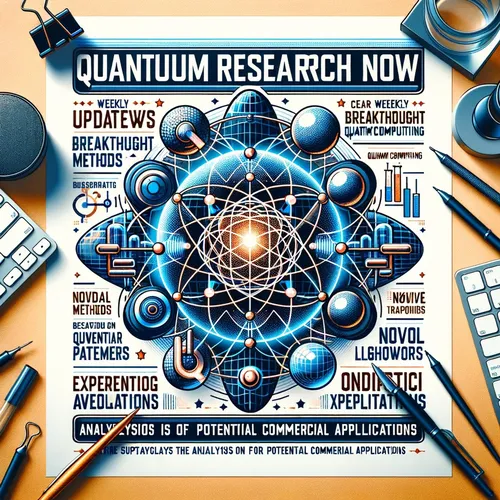Xanadu's Quantum Leap: Photonic Partnership Accelerates AFRL Innovation
- Author
- Quiet. Please
- Published
- Thu 24 Apr 2025
- Episode Link
- https://www.spreaker.com/episode/xanadu-s-quantum-leap-photonic-partnership-accelerates-afrl-innovation--65703952
This is your Quantum Research Now podcast.
I’m Leo, your Learning Enhanced Operator, here on Quantum Research Now, and today, the hum in the quantum corridors is anything but ordinary. While much of the world wakes to morning headlines, our quantum community jolted awake with news from Toronto: Xanadu Quantum Technologies has just announced a sweeping new research and development partnership with the U.S. Air Force Research Laboratory. If you felt the air tingle, that was the collective spark of possibility—photons, ideas, and opportunity all entwined.
Now, you might ask, “Leo, why does this matter?” Picture this: classical computing is like a single-lane highway—organized, predictable, but inevitably congested as more cars try to pass. Quantum computing, especially the photonic kind Xanadu builds, is like opening infinite lanes, where cars don’t just move forward, but sometimes seem to split, join, and even interact in ways that challenge our everyday logic. Today’s news means that those infinite lanes are moving from hopeful blueprints to real, deployable infrastructure.
Let’s get dramatic for a moment—because, frankly, quantum deserves it. Imagine standing in a laboratory in Toronto, the scents of ultra-pure silicon and the faint ozone tang of laser systems in the air. Here’s where Xanadu, which only in January unveiled Aurora—the world’s first complete prototype of a universal photonic quantum computer, a machine woven from 35 photonic chips and over 13 kilometers of optical fiber—has now thrown open the doors to the U.S. Air Force’s vast resources and expertise.
This partnership isn’t just about building bigger machines. It’s a confluence of visionaries—Xanadu’s CEO Christian Weedbrook, whose background fusing quantum theory and practical engineering, has made the company a beacon, and AFRL’s decades of field-hardened technology development. Their goal: accelerating chip-scale, silicon-based quantum circuits, nudging us closer to quantum computers that are as common—and reliable—as smartphones. They’ll share not just hardware, but knowledge, using AFRL’s Process Design Kit to fine-tune photonic circuits for quantum applications like entangled photon generation. If photons are the messengers of quantum information, this alliance means their voices just got a whole lot louder and clearer.
Why photonic quantum computers? Imagine information as water. Classical computers move water in buckets—bits, either full or empty. Photonic quantum computers let the water ripple, superpose, and even dance in entangled pairs, carrying vastly more complexity in less space. With this partnership, we’re seeing the plumbing laid for quantum “waterworks,” scaling up from laboratory trickles to useful, industrial flows.
Elsewhere in the quantum universe, today saw IQM announce the deployment of Poland’s first superconducting quantum computer at Wrocław University of Science and Technology. Another piece on the global chessboard falls into place—a reminder that quantum progress is distributed, much like the phenomenon of entanglement itself.
But let’s return to Xanadu and AFRL’s announcement, and why it resonates far beyond military labs or cloud-access dashboards. It’s a template for how quantum will inevitably weave into the fabric of society. Think back to the dawn of the internet—early government funding, a few key partnerships, and then, suddenly, a web connecting the world. Today’s announcement hints at that same inflection point for quantum: moving from solitary experiments to collaborative, scalable systems, built not by solitary inventors, but by coalitions.
My day-to-day work on quantum algorithms feels, on days like this, like riding the crest of a wave. Every leap in photonic hardware, every new mode of entanglement, sends ripples through the quantum algorithms we can imagine and simulate. The Picasso algorithm, developed at Pacific Northwest...
